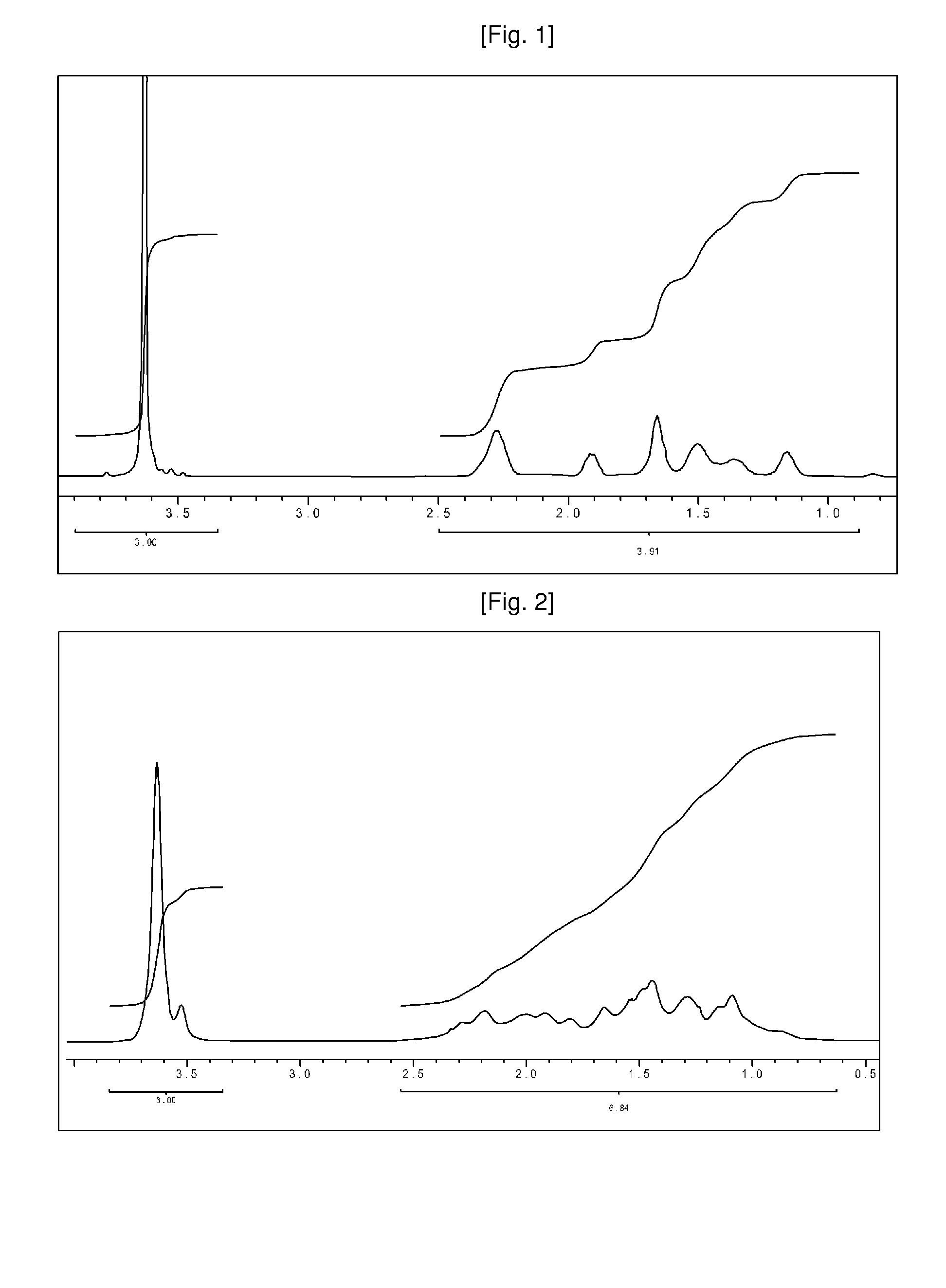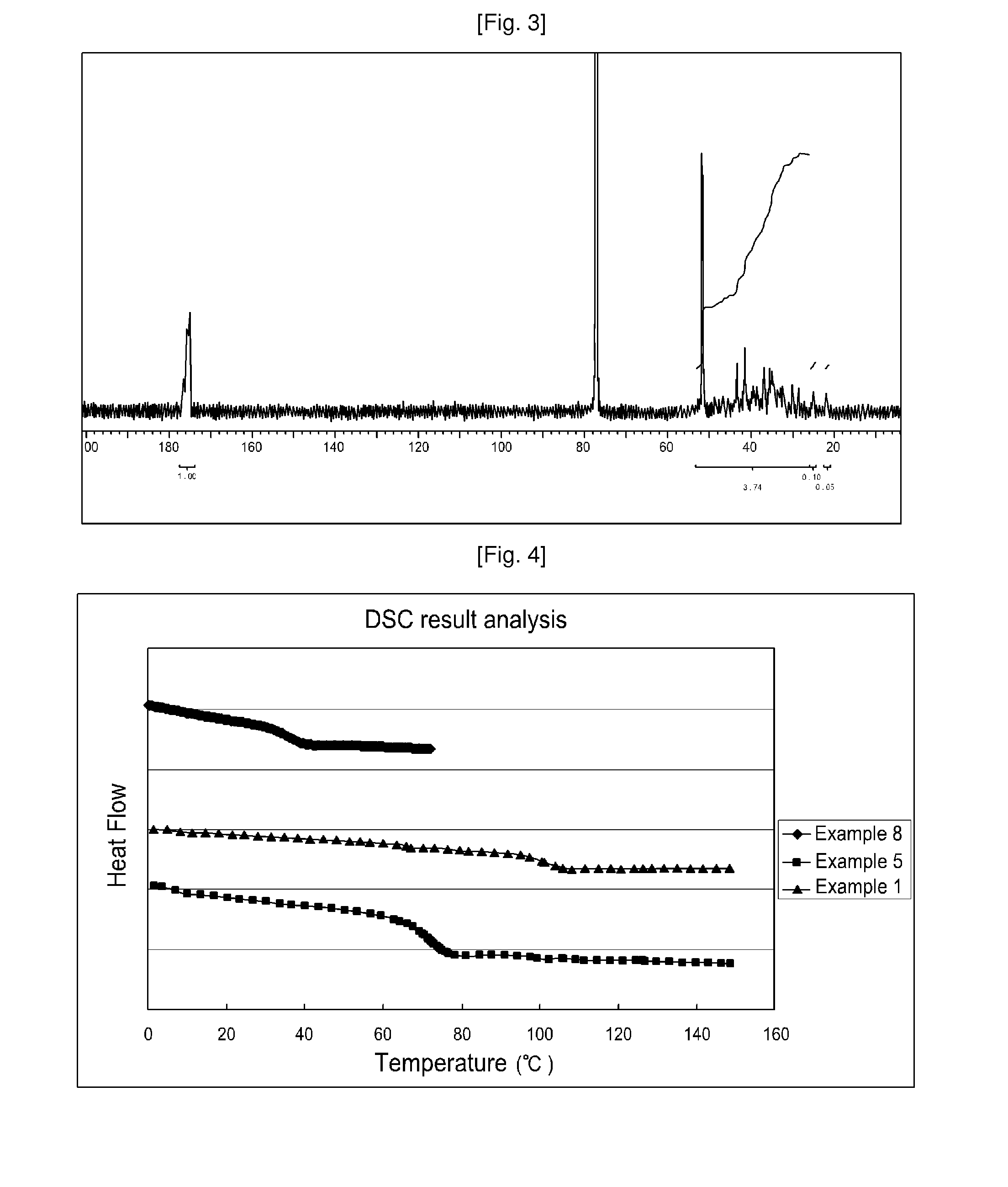Method for preparation of 1-alkene-acrylate based copolymer
a technology of alkeneacrylate and copolymer, which is applied in the field of preparation of an alkeneacrylate based copolymer, can solve the problems of insufficient development of amorphous resins, decrease in melting temperature, and inability to achieve optical products desired, so as to achieve high amount of polar groups. , the effect of easy control of ethylen
- Summary
- Abstract
- Description
- Claims
- Application Information
AI Technical Summary
Benefits of technology
Problems solved by technology
Method used
Image
Examples
example 1
[0144]A 125 ml high-pressure reactor was evacuated and then filled with argon. Then 3.8 g (37.4 mmol) of aluminum oxide, 10 ml of toluene, and 2 ml (18.7 mmol) of methyl methacrylate were added to the reactor. 0.082 mmol of AIBN acting as an initiator dissolved in toluene was also added to the reactor. Then the reactor was filled with 35 bar of ethylene and then the temperature of the reactor was increased to 70° C. and the reaction mixture was stirred in 500 rpm using a magnetic bar. Then the polymerization was performed in such a reactor for 20 hours.
[0145]After the polymerization reaction, the reaction temperature was dropped to room temperature and then the aluminum oxide was recovered through filtering. Then the solution of the polymer in which the metal oxide was removed was added to ethanol acting as a non-solvent, and then the polymer was precipitated with solid phase. Then the solid phase was sunk and then the supernatant liquid was removed. Then ethanol was added to wash t...
example 2
[0146]A 2 L high-pressure reactor was evacuated and then filled with argon. Then 228.7 g (2.24 mol) of aluminum oxide, 300 ml of toluene, and 120 ml (1.12 mol) of methyl methacrylate were added to the reactor. 4.93 mmol of AIBN acting as an initiator dissolved in toluene was also added to the reactor. Then the reactor was filled with 35 bar of ethylene and then a temperature of the reactor was increased to 60° C. and stirred in 250 rpm using a mechanical agitator. Then the polymerization was performed in such reactor for 18 hours. A post treatment processing is the same as Example 1.
[0147]Specific experimental conditions used in Examples 1˜2 and results thereof are illustrated in Table 1.
[0148]
TABLE 1AmountPressure ofofRecoveredMMA:Al2O3AIBN:MMAethyleneTemperaturetimeethyleneTgTd_50MwAl2O3Section(mole ratio)(mole ratio)(bar)(° C.)(hr)(mol %)(° C.)(° C.)(g / mol)PDI(weight %)Example 11:20.44:10035702010.7102—525001.499Example 21:20.44:10035601829.784——98
example 3
[0149]A 125 mL high-pressure reactor was evacuated and then filled with argon. Then 2.3 g (22.2 mmol) of aluminum oxide, 10 ml of toluene, and 3.8 g (44.4 mmol) of methyl methacrylate were added to the reactor. 0.22 mmol of AIBN acting as an initiator dissolved in toluene was also added to the reactor. Then the reactor was filled with 35 bar of ethylene and then a temperature of the reactor was increased to 60° C. and stirred in 500 rpm using a mechanical mixer. Then the polymerization was performed in such reactor for 20 hours. A post treatment processing is the same as Example 1.
PUM
| Property | Measurement | Unit |
|---|---|---|
| temperature | aaaaa | aaaaa |
| pressure | aaaaa | aaaaa |
| melting temperature | aaaaa | aaaaa |
Abstract
Description
Claims
Application Information
 Login to View More
Login to View More - R&D
- Intellectual Property
- Life Sciences
- Materials
- Tech Scout
- Unparalleled Data Quality
- Higher Quality Content
- 60% Fewer Hallucinations
Browse by: Latest US Patents, China's latest patents, Technical Efficacy Thesaurus, Application Domain, Technology Topic, Popular Technical Reports.
© 2025 PatSnap. All rights reserved.Legal|Privacy policy|Modern Slavery Act Transparency Statement|Sitemap|About US| Contact US: help@patsnap.com



